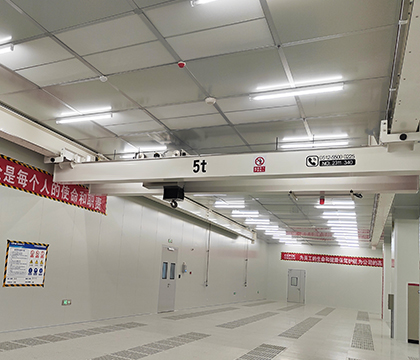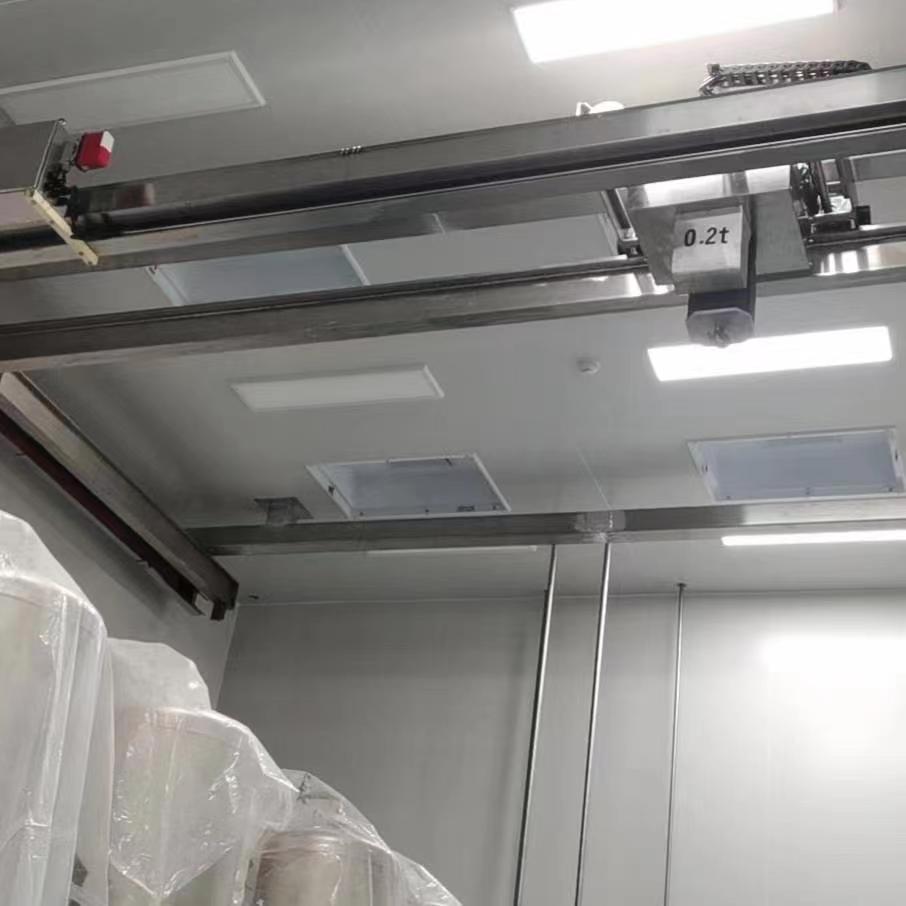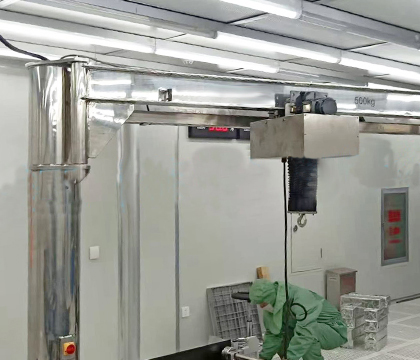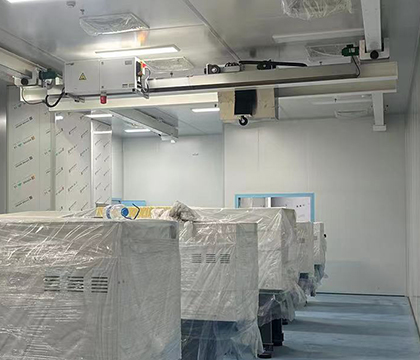Stainless Steel Crane or Steel Crane for Cleanroom Hoisting
Cleanroom cranes come in various designs to suit different lifting needs. These include overhead cranes, gantry cranes, jib cranes, and monorail cranes. Each design offers unique advantages depending on the specific requirements of the cleanroom environment. Materials options are the same.
Stainless steel (SS) cranes are ideal for harsh environments. They are particularly suitable for high moisture food production workshops, chemical and pharmaceutical industries, workshops requiring anti-static lifting devices, etc. The corrosion-resistant properties of stainless steel make these cranes perfect for environments where moisture, chemicals, or other corrosive elements are present.

Steel cranes are also suitable for cleanrooms, especially for those dry cleanroom lifting tasks. According to the cleanliness standard ISO 14644, we have made special design modifications for these cranes, such as dust covers for girders and hoists, motor choice, etc. Mostly suitable for semiconductor industry, optical industry, chip productions, etc.
Choosing between stainless steel and steel cleanroom cranes
To decide whether a stainless steel or steel cleanroom crane is best for your needs, consider the following three tips:
1 Whether it is in Corrosive Environment?
Corrosive Environment: Determine if your cleanroom is in a corrosive environment. Stainless steel cranes are better suited to withstand moisture and chemicals without corroding.
2 What is the Cleanliness in Cleanroom?
Assess the required cleanliness level of your cleanroom. Steel cranes can be modified to meet high cleanliness standards, making them suitable for industries that demand minimal contamination.

3 What is Your Budget?
Evaluate your budget. While stainless steel cranes offer superior resistance to harsh environments, they are typically more expensive. Steel cranes, with the right modifications, can provide a cost-effective solution for cleanrooms that do not face severe environmental challenges.
In summary, both stainless steel and steel cranes can be excellent choices for cleanroom hoisting, depending on the specific conditions and requirements of your operation. By considering the environmental factors, cleanliness standards, and budget constraints, you can make an informed decision that ensures efficient and safe lifting in your cleanroom.
Still don't know what lifting crane for your cleanroom works? Feel free to contact KFCS! We are a professional crane manufacturer and supplier in China, with more than 15 years in cleanroom lifting cranes.





